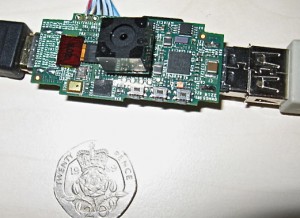By
Debra KaufmanMarch 5, 2021
Startup Fancy Bits, founded by two former GitHub employees, has launched Channels, a kind of DVR for the streaming age. The $8 per month service pulls video from feeds as disparate as cable channels, live streaming apps, on-demand services and over-the-air broadcasts and places them into a single app. “What we’re building towards is something that was sort of built 20 years ago,” said co-founder Jon Maddox. “Really, we’re just trying to make this single place for people to go watch their TV that everybody is looking for.” Continue reading Startup Debuts a DVR-Like App for Media Content: ‘Channels’
By
Rob ScottMarch 4, 2015
The VideoLAN Organization has released an upgraded VLC 2.2.0 open source video player with some notable new features. VLC for Linux, Mac and Windows now includes an in-app extensions store, in-app subtitle downloads, resume playback functionality, and support for interactive Blu-ray menus. Resume playback has been available on mobile versions, but is now offered on the desktop. VideoLAN has also added support for Android TV, Windows Phone and Windows RT. VLC 3.0.0 is scheduled for release later this year. Continue reading VLC Upgrade Adds In-App Extensions Store, Android TV Support
By
Rob ScottFebruary 18, 2015
The affordable Raspberry Pi microcomputer — launched three years ago with the modest hope of selling a few thousand units — just passed the five million sales mark. The Raspberry Pi Foundation offers its no-frills Model A Pi for $25 and the Model B for $35. It recently launched the 6x faster Model B Pi 2 with double the memory for only $35. Originally intended as a cost efficient solution for students, the simple microcomputer is now being used to build everything from DIY computers to robotics projects. Continue reading Low-Cost Raspberry Pi Computer Enjoys Surprising Popularity
By
David TobiaFebruary 5, 2013
The Raspberry Pi was initially intended to help schoolchildren tinker with an inexpensive computer ($35 for new models and $25 for older versions). Nearly a million units later, the Raspberry Pi has become a huge success with hobbyists who customize their miniature computers. The Pi is only 3 inches by 2 inches and is less than an inch in height, but its inexpensive nature allows hobbyists to tinker with the device. Continue reading Raspberry Pi: Mini Computer Attracts Hoards of Hobbyists

Game Developer David Braben, founder of UK-based Frontier Developments, has been working on a project to facilitate computer programming curriculum in schools. Braben argues that computer education has shifted from programming toward basic computer use skills. Usage training is important, but its prevalence has resulted in a lack of knowledge regarding basic programming skills and an understanding of computer architecture and hardware.
 To address this issue, Braben has developed a small $25 USB stick PC with a HDMI port on one end and USB port on the other. By plugging the HDMI socket into a TV or monitor and connecting a keyboard via USB, the stick provides a fully functional machine running Linux. The stick can handle web browsing, run applications, and much more. Braben hopes that such a device can be distributed to students for free so that computer courses can be developed around its use.
To address this issue, Braben has developed a small $25 USB stick PC with a HDMI port on one end and USB port on the other. By plugging the HDMI socket into a TV or monitor and connecting a keyboard via USB, the stick provides a fully functional machine running Linux. The stick can handle web browsing, run applications, and much more. Braben hopes that such a device can be distributed to students for free so that computer courses can be developed around its use.
According to Geek.com: “The hardware being offered is no slouch either. It uses a 700MHz ARM11 processor coupled with 128MB of RAM and runs OpenGL ES 2.0 allowing for decent graphics performance with 1080p output confirmed. Storage is catered for by an SD card slot.” The photo above shows the Raspberry Pi device with an attached 12 megapixel camera module. (The Geek.com report also includes an interesting video interview with Braben.)
Braben’s USB stick PC plans to be distributed through a charitable foundation called the Raspberry Pi Foundation. He hopes to distribute the device within the next 12 months.
Based on its cost and portability, we could see a range of applications outside the classroom.

